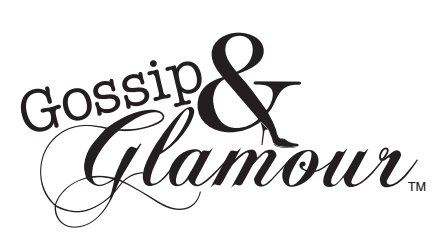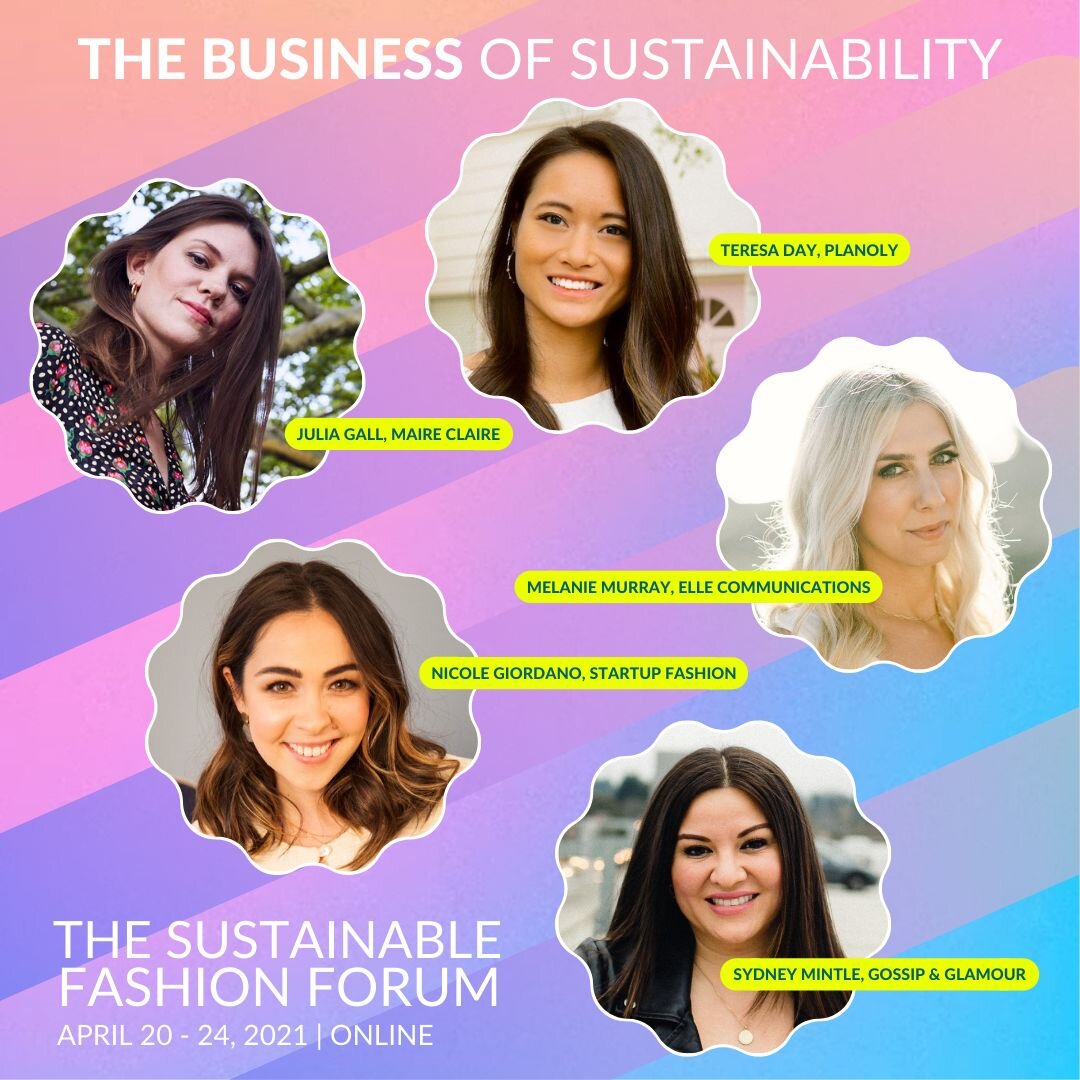Key Takeaways: The Role of PR in Sustainability
Gossip & Glamour recently had the chance to participate in the 5th Annual Sustainable Fashion Forum that took place digitally April 20-24. Our specific contribution was as part of a panel, moderated by Brittany Sierra, that took a deep dive into the business of sustainability and more specifically, the role PR plays when it comes to communicating sustainable efforts on behalf of brands. The panel included a variety of voices including Julia Gall, Accessories Director at Marie Claire, and PR Pro Melanie Murray, Senior Associate at Elle Communications. We talked about what publicists can do to help brands avoid greenwashing and how brands can create better sustainability programs. As a fashion industry publicist with a background in apparel sourcing and production, this panel was the perfect way for me to share my insight with the sustainable fashion community. The bottom line: even small changes in the way the fashion industry operates can have a BIG impact on the planet.
Here are some key Q&A’s from our discussion:
What is public relations look like in 2021 and what role does the modern publicist play?
Public relations today is a mix of everything from marketing strategy, messaging, community building, influencer outreach, PR pitching, product seeding, and working through sustainability and social justice initiatives. In a nutshell, PR professionals wear a lot of hats these days. At Gossip & Glamour, we provide insight into a variety of areas in the fashion industry and help work across teams to streamline communication efforts. When it comes to sustainability, the role of today’s publicist is to help brands be clear about the work they’re doing and ensure that the messaging is as transparent as possible. It's about bringing together solid data with messaging that is easy for consumers to understand.
Transparency can come in various formats including images, videos of the factory or production process, testimonials from factory workers and vendors, 3rd party audits, internal and external sustainability reports with metrics, and other forms of data that can showcase current conditions and ongoing opportunities. The goal is to ensure that brands have adequate proof points to show consumers that their efforts are more than just a marketing spin. Vague messaging when it comes to sustainability must end.
What is the difference between PR and marketing?
I get this question a lot when I work with clients and the truth is, in today’s business environment marketing and PR overlap quite a bit. Marketing focuses on promoting products to fuel sales. PR is about strategic messaging, brand building, and managing a brand’s relationship with the media. I work with clients on both and find that the lines frequently blur as the industry evolves. It’s important that brands have clear channels of communication across teams when it comes to marketing, PR, and social media. Otherwise, their efforts will be wasted and they’ll miss an opportunity to streamline and build collective momentum.
At Gossip & Glamour, we take a holistic approach to marketing and PR and help clients identify all the unique ways they can make an impact as a brand.
How do you craft compelling messaging around the brands you work with when it comes to sustainability?
At Gossip & Glamour, it’s always been about sharing the backstory behind the brand and helping people understand how their consumption ultimately impacts people and the planet. The messaging needs to be easy to digest and the overall tone needs to remain optimistic, focusing on the many steps a brand is taking in the right direction while acknowledging that there’s still a lot of work yet to be done.
Consumers need to understand that everything is connected. Their consumer habits fuel the fast fashion calendar that brands feel like they need to adhere to and that’s when they cut corners, force factory workers to work overtime to rush to meet deadlines, only to deliver product that is “hot” for a minute and then is marked down to prices that don’t even cover costs. It’s a vicious cycle. Slow fashion and conscious consumption is the future.
What digital tools are most effective in communicating a company’s sustainability story?
Social media has been an important platform for us to share client stories about sustainability because a large part of that is on consumer education and building trust through transparency. We also share information about sustainability through company blogs, newsletters, speaking engagements at events like the Sustainable Fashion Forum, and through podcasts which allow clients to dive deeper into specific aspects of their sustainability work.
Do you think PR and marketing professionals should be held accountable for the messaging they put out into the world?
YES, 1,000%. As publicists, we are responsible for the messaging we put out on behalf of clients and we should absolutely be held accountable. Consumers are already concerned about greenwashing and it’s up to brands to be as truthful as possible when it comes to sustainability. There are so many complicated layers to sustainability and it doesn’t take long to find loopholes, so it’s up to brands to operate with a high level of integrity and for PR professionals to validate those claims with proof points.
How should brands enter into the conversation of sustainability?
Brands have to do the work and embrace long-term strategies over short-term gains. Entering the conversation is easy, doing the work and measuring success is the hard part. There will always be consumers who think that brands aren’t doing enough, or they’re not doing things fast enough- but it’s important to understand that every step in the right direction ultimately has an impact on the planet and we need to keep going. Brands need to be clear about the work they’re doing and stay accountable to those goals.
When establishing sustainability goals, we encourage brands to take a broad view of their entire operation and identify ways they can make a positive impact, even if it means building slowly over time. In order to do this effectively, brands need to have transparency within the supply chain and they need to think of the people within their supply chain as valued partners.
People don’t want to hear that doing the right thing is going to be the harder, more expensive thing that takes a long time to do, but when it comes to sustainability, it’s worth it and we have to do the work. There is no “Planet B” and we all need to be working toward these goals together.
What is the future of public relations when it comes to speaking about sustainability?
In the future, sustainability and social responsibility will be woven into the very fabric (pun intended) of business because it will be what conscious consumers demand as a standard practice. As a result, fashion publicists will be able to speak to both topics with ease because those things won’t be fringe initiatives but rather, normal parts of the business that are applicable to report on.
How can a start-up brand with little or no PR budget get its sustainability message out there?
Smaller brands should utilize the platforms they already have including social media, e-mail marketing, video, website, blog, etc. to share their sustainability messages and be clear about the work they’re doing. Consumers don’t want to hear vague messaging about sustainability, they want to know exactly what brands are doing now and what goals they’re working toward. I encourage brands to share quarterly updates, be honest about obstacles, and keep the conversation going in their everyday operations.
How has digitalization and social media affected fashion PR?
The rise of digital has given consumers a clear line of communication with brands and a platform to hold them accountable. Ultimately, this feedback loop is a great thing for brands that are doing the right thing. For brands that are trying to hide, I encourage you to take the first step in the right direction. There’s no going back now and we need the entire fashion industry to take a deep dive into sustainability and look at the ways they can be part of the solution instead of contributing to the problem.
Final Thoughts For Brands:
If you’re not already working toward solid sustainability initiatives, you’re late to the party.
Create a holistic sustainability program by taking a broad look at your company and identifying unique ways to make a positive impact.
Be transparent about your sustainability efforts if you want to build trust.
Final Thoughts For Consumers:
Sustainability is a complex issue in the fashion industry.
Be conscious about your consumption.
Vote with your dollars by supporting brands who actually doing the work to make the world a better place.
Check out the Sustainable Fashion Forum on Youtube for free videos, tips, and resources. For an example of a sustainable fashion brand leading the way when it comes to prioritizing the triple bottom line (people, planet, profit), check out Boma Jewelry.











